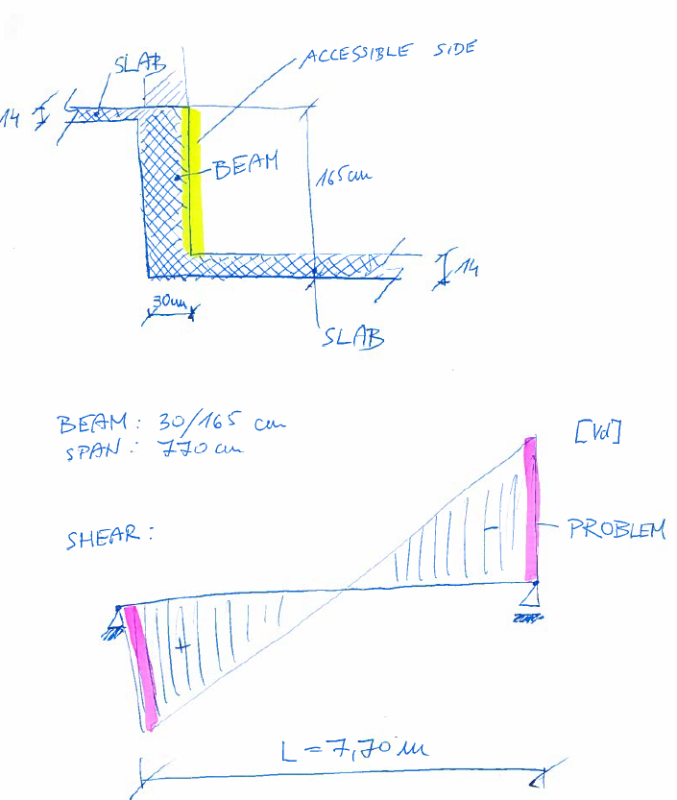n3jc
Civil/Environmental
- Nov 7, 2016
- 189
Hi guys. Im having some problems with existing concrete beam. There is gonna be an increasment of the load on a beam so I have to check if existing reinforcement is sufficient.
Existing bending reinforcement (top/bottom) is sufficient but im having trouble with a shear control at both ends of a beam.
I dont know what to do since there is no access to bottom or top of the beam. The only accessible part of the beam is marked yellow - see attached picture.
What are my options?

Existing bending reinforcement (top/bottom) is sufficient but im having trouble with a shear control at both ends of a beam.
I dont know what to do since there is no access to bottom or top of the beam. The only accessible part of the beam is marked yellow - see attached picture.
What are my options?

